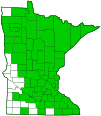pagoda dogwood
(Cornus alternifolia)
Conservation • Wetland • Description • Habitat • Ecology • Use • Distribution • Taxonomy
Description |
||
Pagoda dogwood plant is deciduous, slow-growing, and short-lived. It is usually a shrub, sometimes a small tree. In Minnesota mature individuals are usually 8′ to 25′ tall, with a trunk up to 6″ in diameter, though large individuals may reach 30′ tall. When in the form of a shrub, it rises on several sprawling stems that often fork near the ground. When in the form of a tree, it rises on a single trunk. The crown is broad and flat-topped. Branches are horizontal and curl upwards at the ends. They are arranged in irregular whorls, forming separate, horizontal tiers, which gives the crown a layered appearance and the plant its common name. The bark on young trees is dark green and smooth. On mature trees the bark is thin, dark gray to reddish brown, and smooth or dividing into shallow fissures. The twigs are slender, smooth, shiny, greenish-yellow to dark reddish-brown, or dark purplish-red. The pith is white. The tips of the twigs turn upwards. Dead twigs turn yellowish-orange. The terminal buds are about ¼″ long, narrowly egg-shaped, pointed, reddish-brown or purplish-brown, and loosely covered with 2 or 3 scales. Flower buds are rounded. The leaves are alternate, oval to egg-shaped, 2½″ to 4½″ long, and 2″ to 3″ wide. They are on 1¼″ to 2″ long leaf stalks. They are usually clustered near the tips of the branches, making them appear whorled or almost opposite. On each side of the midrib there are 5 or 6 conspicuous veins that curve upward toward the tip of the leaf. They are rounded or short-tapered at the base and tapered at the tip to a long, sharp point. The upper surface is dark green and hairless or sparsely hairy with appressed hairs. The lower surface is paler and hairy. The leaves turn yellow to red to purple in autumn. The inflorescence is a large, open, branched cluster at the ends of branches. The clusters are 2″ to 4″ across and flat-topped or round-topped, usually hemispherical. The flowers are small and white or cream colored. There are 4 minute sepals, 4 small petals, 4 stamens with long filaments, and a well-developed style. They open after the leaves. The fruits are berry-like, 5 ⁄16″ to ⅜″ in diameter, and borne on a red stalk. It is green initially, turning to red, finally to bluish-black. It ripens in mid-summer. |
||
Height |
||
8′ to 25′ |
||
Flower Color |
||
White |
||
Similar Species |
||
Pagoda dogwood often grows as a tree and always has alternate leaves, distinguishing it from other dogwoods. |
||
Habitat |
||
Woods, wood edges, thickets. |
||
Ecology |
||
Flowering |
||
May to June |
||
Pests and Diseases |
||
|
||
Use |
||
|
||
Distribution |
||||
|
Sources |
|||
| 2/24/2023 | ||||
Nativity |
||||
Native |
||||
Occurrence |
||||
Common |
||||
Taxonomy |
|||
| Kingdom | Plantae (Plants) | ||
| Division | Tracheophyta (Vascular Plants) | ||
| Subdivision | Spermatophytina (Seed Plants) | ||
| Class | Magnoliopsida (Dicots) | ||
Order |
Cornales (dogwoods, hydrangeas, and allies) | ||
Family |
Cornaceae (dogwood) | ||
| Subfamily | Cornoideae | ||
Genus |
Cornus (dogwoods) | ||
| Subgenus | Mesomora | ||
Subordinate Taxa |
|||
|
|||
Synonyms |
|||
| Swida alternifolia | |||
Common Names |
|||
alternate-leaf dogwood alternate-leaved dogwood alternateleaf dogwood green osier pagoda dogwood pigeon berry pigeonberry |
|||
Glossary
Filament
The thread-like stalk of a stamen which supports the anther.
Sepal
An outer floral leaf, usually green but sometimes colored, at the base of a flower.
Visitor Photos |
|||||
Share your photo of this plant. |
|||||
| This button not working for you? Simply email us at info@MinnesotaSeasons.com. Attach one or more photos and, if you like, a caption. |
|||||
Randy |
|||||
Characteristic green bark, along with alternate leafing, makes it easy to distinguish from Red and Gray Dogwood. |
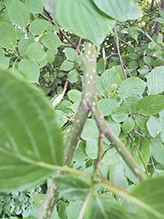 |
||||
Leaves and flowers. |
|||||
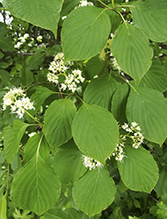 |
|||||
Flowers. |
|||||
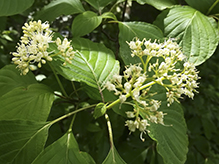 |
|||||
Bill Reynolds |
|||||
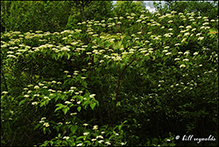 |
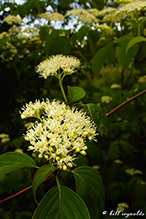 |
||||
MinnesotaSeasons.com Photos |
|||||
Leaves |
|||||
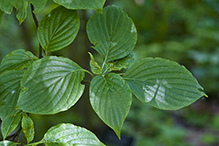 |
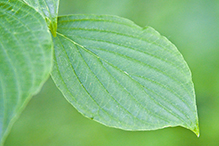 |
||||
Fall Color |
|||||
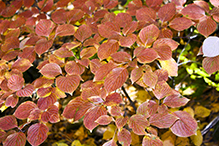 |
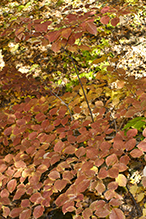 |
||||

Slideshows |
||
| Cornus alternifolia Blake C. Willson |
||
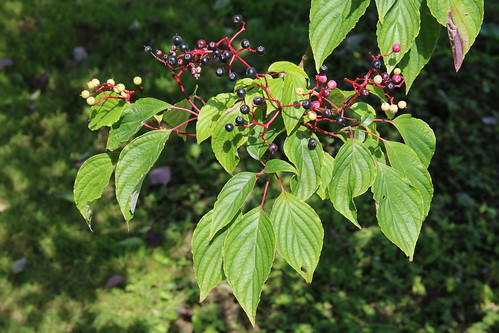
|
||
About
Pagoda Dogwood |
||
| Pagoda Dogwood (Cornus alternifolia) Andree Reno Sanborn |
||
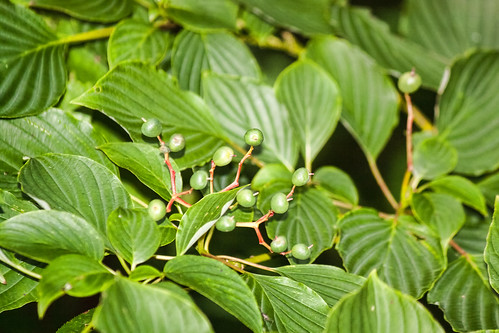
|
||

Visitor Videos |
|||
Share your video of this plant. |
|||
| This button not working for you? Simply email us at info@MinnesotaSeasons.com. Attach a video, a YouTube link, or a cloud storage link. |
|||
Other Videos |
|||
| Trees with Don Leopold - alternate-leaf dogwood ESFNature |
|||
About
Published on Dec 12, 2013 Professor Don Leopold demonstrates the characteristics of the alternate-leaf dogwood. |
|||
| Alternate Leaf Dogwood, Cornus alternifolia MrILoveTheAnts |
|||
About
Published on May 9, 2012 Two or Three years ago I planted an Alternate Leaf Dogwood sapling because I read a short sentance or two about it in the book "Bringing Nature Home" by Doug Tallamy. He praises it for the berries it makes that birds love to eat, but I have to praise it for the flowers and assortment of pollinators it attracts! This is the first year it's flowered and I've never seen a tree do it so profusely. I have Viburnums that are taller than this that don't produce as many flowers. This was a good pollinator investment. |
|||

Visitor Sightings |
|||||
Report a sighting of this plant. |
|||||
| This button not working for you? Simply email us at info@MinnesotaSeasons.com. Be sure to include a location. |
|||||
| Randy June 2021 |
Location: Albert Lea, MN Leaves and flowers. |
 |
|||
| Randy June 2020 |
Location: Albert Lea, MN Characteristic green bark, along with alternate leafing, makes it easy to distinguish from Red and Gray Dogwood. |
 |
|||
| Bill Reynolds 6/25/2004 |
Location: St. Louis Co. |
 |
|||
| Bill Reynolds 6/23/2004 |
Location: St. Louis Co. |
 |
|||
MinnesotaSeasons.com Sightings |
|||||
Avon Hills Forest SNA, North Unit Carpenter St. Croix Valley Nature Center Charles A. Lindbergh State Park Forestville/Mystery Cave State Park Hardscrabble Woods / MG Tusler Sanctuary Itasca Wilderness Sanctuary SNA John Peter Hoffman Spring Brook Valley WMA Lake Alexander Woods SNA, South Unit |
|||||

|
Created: Last Updated: © MinnesotaSeasons.com. All rights reserved. |
